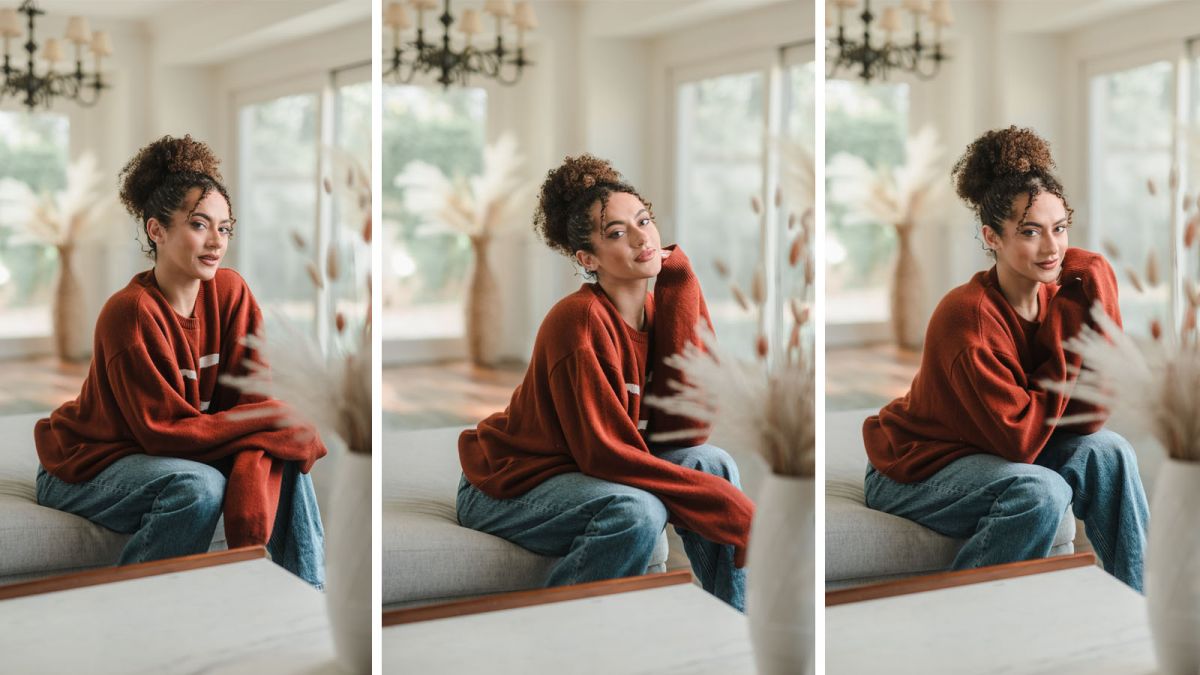
When it comes to lighting, specifically using off-camera flash, one of the biggest mistakes we tend to make is that we don’t understand the value of fill light. It’s important to know what to do, as well as what not to do, when it comes to using fill. In this tutorial, we’ll walk you through tips for knowing when and how to create fill light to help you level up your lighting abilities.
Let’s get started.
Video: The Importance of Fill Light in a Scene
Gear Checklist
Here’s a quick list of the lighting gear used to create the images in this tutorial:
- Light: Westcott FJ400
- Trigger/Remote: FJ-X3 Trigger
- Softbox: Westcott Rapidbox Switch Octa-M
Like always, use whatever gear you have available to you.
C.A.M.P. Framework
If you’re not already familiar with the C.A.M.P. Framework (Composition, Ambient Light, Modify/Add Light, Pose and Photograph), it’s a process we use to work through each scene and portrait session. You can learn about the C.A.M.P. Framework in more detail here.
That said, let’s start with composition.
Step 1. Composition

In this living room scene, there’s a lot of window light coming in from one side. All of the light through the windows gives the room a bright, natural vibe. For this reason, we’ve decided to shoot with the windows camera right and with plenty of space behind the subject to create a bit of depth. Of course, your focal length, distance from the subject, and aperture will also affect the composition. We’ll get into those choices as we work through this tutorial. Lastly, as you’ll see in the coming examples, we opted to shoot these portraits using a vertical (or portrait) orientation for the camera.
Step 2. Ambient Exposure
When setting our ambient exposure, we can set our intention and choose whether we want to lean more towards the natural, bright & airy look, or go for a more dramatic image with deeper shadows and more contrast. There’s not necessarily a right or wrong way to light it so long as your lighting style supports your intention or the look you’re going for.
Dramatic Lighting

Above, you can see the results of dialing in “dramatic” settings (in-camera and for the flash) that most people associate with flash. It can prove a worthwhile look, but it’s important to understand that flash can also be used to enhance a natural looking image.
The Value of Fill Light
We mentioned up top that photographers often fail to understand the value of fill light. Now, what do we mean by that? Well, fill light will help determine the depth or the level of blacks that exist in the shadows of the image. Photographers often use one light and overpower everything, which results in having the depth of the shadows drop away completely. The shadows simply become blacked out. While that is a style in and of itself, we’re going to use fill to create a different look here.

Set the ambient light first to determine your fill light. In other words, let your ambient exposure setting determine what your shadows will look like in this scene. Because the room lends itself well to the bright natural look, we’ll dial in our ambient exposure a bit on the brighter side. We started by exposing for the subject’s skin, and then we dialed back the exposure to get the shadows where we wanted them.
Note: In this scene, the ambient light basically serves as the fill light. When you’re working in the studio, however, using only your studio lights for “ambient” light, you’re going to have to set up a fill light.
[Related Video: 3-Light Setup for Flattering Editorial Portraits]
Step 3. Add or Modify Light
Knowing that we’re using the ambient light for fill light, we can add in our key (or main) light. Remember, each adjustment we make needs to reflect our intention for the photos. Do we want them to look natural, moody, or some other way?

For our bright and natural look, we want to keep the flash subtle so that it refines the lighting and enhances the overall look of the image without taking it in a completely different direction.
Step 4. Pose and Photograph
From here, all that’s left is to start posing and capturing images. With this setup, you’ll notice the final images present a somewhat commercial vibe.
Fill Light in a Scene: Final Images







Get Connected!